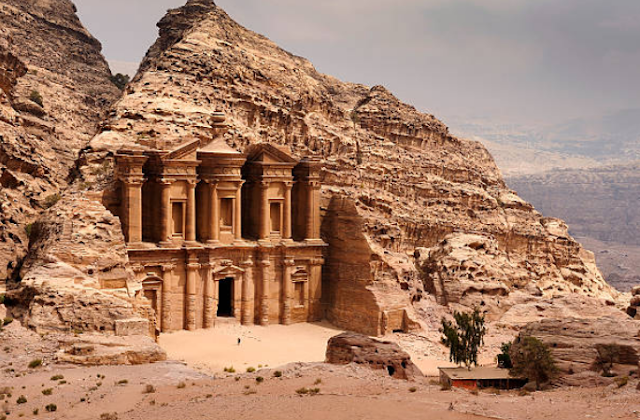 |
| Colosseum |
The World Wonders: Colosseum, Stonehenge, The Pyramid of Giza, Machu Picchu, Petra
The wonders of the world are a journey through time, culture, and architectural majesty that stood the test of time.
In this article, we will explore the cool stories behind the Colosseum, Stonehenge, the Pyramid of Giza, Machu Picchu, and Petra.
These iconic sites draw millions of visitors each year and are celebrated for their history, culture, and stunning architecture.
1. Colosseum: The Eternal City’s Eternal Idol
The Colosseum — or Flavian Amphitheatre — is perhaps the most recognizable symbol of ancient Rome’s glory. Constructed between A.D. 70 and 80, this enormous amphitheater could accommodate up to 50,000 spectators.
It hosted gladiatorial contests, public spectacles and dramatic performances.
But what makes the Colosseum distinctive is its clever design. It's a structure with a maze-like system of vaults, corridors, and seating tiers that manages crowds well.
Its use of travertine and Roman concrete has rendered it durable over the centuries.
Now a UNESCO World Heritage Site and an example of Roman ingenuity, the Colosseum has endured thorough farewells over its nearly 2,000-year history.
Whether you’re gazing up at its monumental arches or wandering through its centuries-old hallways, the Colosseum provides a unique view of the grandeur of the Roman Empire.
 |
| Stonehenge |
2. Stonehenge: Its New Discoveries and Secrets
Located in the Salisbury Plain of England, Stonehenge is one of the most mysterious monuments on the continent. Dating back to around 3000-2000 BC, this prehistoric stone circle continues to confuse archaeologists and historians alike.
The importance of Stonehenge is not just in the way it was constructed, but in its ability to tell the time of the year: ‘Not only the winter solstice, but summer solstice’.
The stones are arranged so that they align with the sunrise during the summer solstice and the sunset on the winter solstice, making it one of the earliest known astronomical calendars.
With its enigmas, Stonehenge is still a site of spirituality and culture, and a draw for visitors from around the world. Its UNESCO World Heritage status means it is preserved for future generations to speculate about its secrets.
 |
| Pyramid |
3. The Pyramids of Giza: A Masterpiece of Ancient Engineering
THE GREAT PYRAMID OF GIZA, the only surviving wonder of the ancient world, is an architectural and engineering wonder. Constructed around 2560 BC as a tomb for Pharaoh Khufu, it reaches a height (originally) of 146 meters and was the tallest man-made structure for over 3,800 years.
Made up of over 2 million limestone blocks, each averaging 2.5 tons, the pyramid's construction is so precise that experts are still amazed.
The way it is aligned with the cardinal points, along with the mathematical expertise involved in its construction, shows how advanced the architects of ancient Egypt were.
Tourists to the Pyramid of Giza usually combine their trip with visits to the Sphinx and the neighboring pyramids, soaking in the deep history of ancient Egypt.
This symbol of human achievement and resilience is still one of UNESCO World Heritage Sites.
 |
| Machu Picchu |
4. Machu Picchu | The Lost City of the Incas
Tucked away deep in the Andes Mountains of Peru, Machu Picchu is a breathtaking remnant of Inca civilization. Thought to have been constructed in the 15th century, this archaeological marvel was rediscovered in 1911 by Hiram Bingham.
Frequently referred to as the “Lost City of the Incas,” Machu Picchu is an engineering and architectural masterpiece.
Located at an elevation of 2,430 meters, the complex has an elaborate layout of terraces, temples and residences. An ancient ritual stone called the Intihuatana Stone is indicative of the Inca’s fascinations with astronomy.
With its incredible setting and cultural importance, Machu Picchu is now one of the most visited places in South America. A UNESCO World Heritage Site and one of the New Seven Wonders of the World to date, it still mesmerizes travelers interested in exploring ancient civilizations.
 |
| Petra |
5. Petra: The Rose-Red City
Burrowed into the craggy mountains of southern Jordan, Petra is a city hewn into rose-red sandstone cliffs. Founded around 312 BC by the Nabataeans, Petra was an important trading center for ancient caravan routes.
Petra’s most famous monument is Al-Khazneh, or “The Treasury,” a beautiful facade carved into the rock. Prominent structures include the Monastery, the Royal Tombs and the Siq, a narrow gorge that paves the way to the heart of the city.
The advanced water management systems of Petra, including cisterns and aqueducts, speak volumes about its inhabitants ingenuity. Petra was named a UNESCO World Heritage Site in 1985 for its importance to culture, history and architecture.
Preserving the World Wonders
And each of these wonders provides a different perspective on humanity’s past. Whether it is the Colosseum, the Stonehenge, the Pyramid of Giza, Machu Picchu or Petra, all of these places manifest a glimpse of our past, testament to our civilization’s shared identity and culture.
Therefore, to save these sites for the next generations, UNESCO and many other organizations have worked hard to preserve these places.
Travelers can play their part by respecting these sacred spaces and practicing sustainable tourism.
Whether you love visiting history, an architecture lover or just an adventurous traveler, these wonders of the world is going to give you an infinite experience. To explore the wonders of what humans have created and the beauty of nature.

